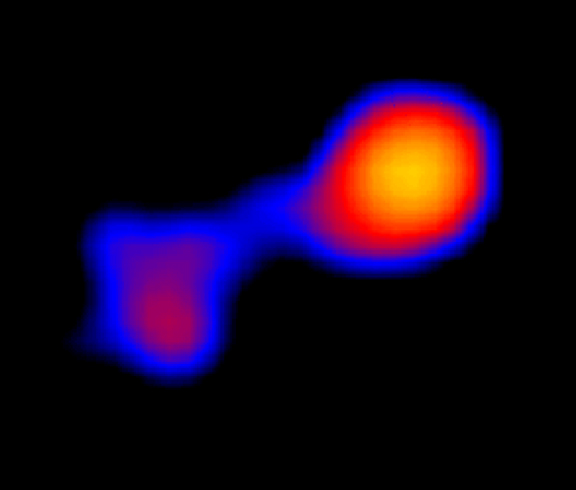
Mira: The Wonderful Star
Credit: X-ray Image: M. Karovska (Harvard-Smithsonian CfA) et al., CXC / NASA
Illustration: M.Weiss(CXC)
|
North Central Kansas Astronomical Society |
Home | Carbon
Stars | Double Stars | Galaxies |
Globular Clusters | Nebulae |
Open Clusters
Solar
System | Stars | Images |
Asterisms
| Student Images
| Current
Weather

To seventeenth century astronomers, Omicron Ceti or Mira was known as a wonderful star - a star whose brightness could change dramatically in the course of about 11 months. Modern astronomers now recognize an entire class of long period Mira-type variables as cool, pulsating, red giant stars, 700 or so times the diameter of the Sun. Only 420 light-years away, red giant Mira (Mira A, right) itself co-orbits with a companion star, a small white dwarf (Mira B). Mira B is surrounded by a disk of material drawn from the pulsating giant and in such a double star system, the white dwarf star's hot accretion disk is expected to produce some x-rays. But this sharp, false-color image from the Chandra Observatory also captures the cool giant star strongly flaring at x-ray energies, clearly separated from the x-ray emission of its companion's accretion disk. Placing your cursor over the Chandra x-ray image of Mira will reveal an artist's vision of this still wonderful interacting binary star system.
| CANIS MAJOR (KAY-nis May-jer) The Big Dog. Genitive: Canis Majoris (Kay-nis May-JOR-is). Abbreviation: CMa | |
|---|---|
 |
Sirius,
SAO 151881
GSC 5949:2767, HIP 32349, HD 48915, B-16 1591, Flamsteed-Bayer: 9-Alpha Canis Majoris Spectral: A0m... Constellation: Canis Major **** Data from Hipparcos Catalog **** Proper motion (mas/yr): RA = -546.01, Dec = -1223.08 Magnitudes Bt: 0.000, Vt: 0.000 Parallax: 379.210 mas, 2.6371 pc Distance: 8.60 light-years, 543933.92 astronomical units Magnitude: -1.44 RA: 06h 45m 16.161s Dec: -16°43'20.135" RA: 06h 45m 08.917s Dec: -16°42'58.017" (Epoch 2000) **** Observation Log **** The big dog of the sky! The brightest star in sky. Trying to split the components of this binary system. It's going to take a great night to do that. Couldn't split Sirius A and Sirius B (Called the Pup), but this star low on the horizon is something to behold. What a sight! This APOD shows both components in an X-ray image. |
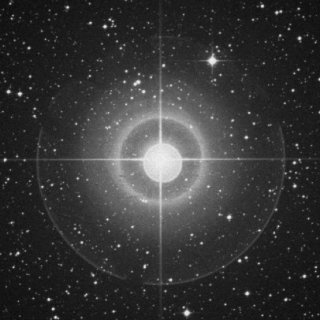 |
SAO 172797 ,
GSC 6531:3793, HIP 33856, PPM 251469, HD 52877, P-27 1648, Flamsteed-Bayer: 22-Sigma Canis Majoris Spectral: K4III **** Data from Hipparcos Catalog **** Proper motion (mas/yr): RA = -6.01, Dec = 4.64 Magnitudes Bt: 5.743, Vt: 3.675 Parallax: 2.680 mas, 373.1343 pc Distance: 1217.00 light-years, 76964616.25 astronomical units Magnitude: 3.49 RA: 07h 01m 43.148s Dec: -27°56'05.389" (Epoch 2000) **** Observation Log **** A very red variable star. This is another monster red giant star, and intrinsically one of the brightest in the sky. |
|
|
|
| CEPHEUS (SEE-fee-us) The King. Genitive: Cephei (See-fee-eye). Abbreviation: Cep | |
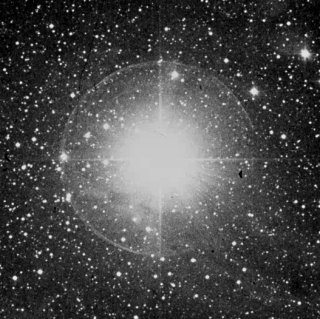 |
Mu Cephei, The Garnet Star,
SAO 33693 ,
GSC 3979:1616, HIP 107259, PPM 39787, HD 206936, B+58 2316 Flamsteed-Bayer: Mu Cephei Spectral: M2Ia Magnitude: 4.23 RA: 21h 43m 33.866s Dec: +58°47'46.781" RA: 21h 43m 30.461s Dec: +58°46'48.166" (Epoch 2000) **** Observation Log **** This is one of my favorite stars of all time. This monster is over 112,000 times the size of our sun!!! This is one of the most red naked-eye stars in the sky and it's not even a carbon star. Mu Cephei is one of those red stars that exhibit color change in aperture. The smaller the aperture, the redder this star becomes. In large aperture instruments, this star is yellow-orange. This star is a light factory! It's huge and bright. Mu Cephei is 5,436 light years away, has a temperature of only 2,193K, a size of 112,809 solar radii, and a luminosity of a whopping 264,115,342 suns! |
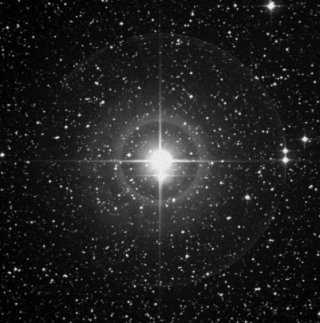 |
SAO 34508,
GSC 3995:1479, HIP 110991, PPM 40731, HD 213306, B+57 2548, Flamsteed-Bayer: 27-Delta Cephei Spectral: G2Ibvar **** Data from Hipparcos Catalog **** Proper motion (mas/yr): RA = 16.47, Dec = 3.55 Magnitudes Bt: 5.021, Vt: 4.150 Parallax: 3.320 mas, 301.2048 pc Distance: 982.40 light-years, 62128066.51 astronomical units Magnitude: 4.07 RA: 22h 29m 10.266s Dec: +58°24'54.715" (Epoch 2000) **** Observation Log **** The prototype of the Cephid Variable type stars. Just to check in on this lovely binary system. Delta Cephei, a beautiful yellow star and it's blue companion. Didn't notice that it was any dimmer visually. It would be fun to study this star to view and measure it's variability... |
 Back to top...
Back to top... |
|
| ORION (Oh-RYE-an) The Hunter. Genitive: Orionis (OR-e-oh-nis). Abbreviation: Ori | |
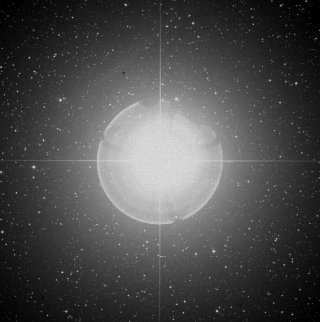 |
Betelgeuse, SAO 113271,
GSC 129:1873, HIP 27989, PPM 149643, HD 39801, B+07 1055, Flamsteed-Bayer: 58-Alpha Orionis Spectral: M2Ib **** Data from Hipparcos Catalog **** Proper motion (mas/yr): RA = 27.33, Dec = 10.86 Magnitudes Bt: 2.849, Vt: 0.769 Parallax: 7.630 mas, 131.0616 pc Distance: 427.47 light-years, 27033443.46 astronomical units Magnitude: 0.45 RA: 05h 55m 19.114s Dec: +07°24'27.941" RA: 05h 55m 10.305s Dec: +07°24'25.426" (Epoch 2000) Azm: 115°45'20" Alt: +38°26'40" Rise: 09:11 Transit: 15:37 Set: 22:04 Hour angle: -03h 01m 20.4s Air mass: 1.61 Position error: 1.88 mas **** Observation Log **** Betelgeuse is another huge red supergiant. One of the brightest stars in the sky. Betelgeuse is 429 light years distant. Has a temperature of 3,488K a size of 1,516 solar radii, and a luminosity of 305,089 suns. |
|
|
|
| SAGITTARIUS (Sa-jih-TARE-ee-us) TheArcher. Genitive: Sagittarii (Sa-jih-TARE-ee-eye). Abbreviation: Sgr | |
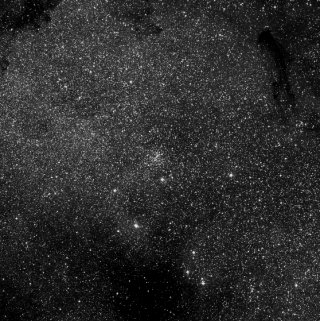 |
Little Star Cloud , M24, NGC 6603 Other description: Open cluster dense. Constellation: Sgr Dreyer description: Remarkable!, cluster, very rich in stars, very much compressed, round, stars of magnitude 15 (Milky Way). Magnitude: 11.0 RA: 18h 18m 40.6s Dec: -18°24'59" RA: 18h 18m 24.0s Dec: -18°25'00" (Epoch 2000) **** Observation Log **** M24 is an incredible swarm of stars in Sagittarius. The star chains and profusion of stars is breath-taking at a dark-sky site. |
|
|
|
| URSA MINOR (ER-sa My-ner) The Little Bear. Genitive: Ursae Minoris (ER-see MY-nor-is). Abbreviation: UMi | |
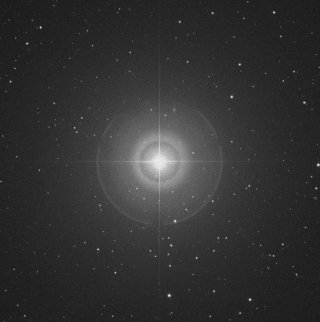 |
Polaris, The North Star, SAO 308,
GSC 4628:237, HIP 11767, PPM 431, HD 8890, B+88 8, Flamsteed-Bayer: 1-Alpha Ursae Minoris Spectral: F7:Ib-IIv SB **** Data from Hipparcos Catalog **** Proper motion (mas/yr): RA = 44.22, Dec = -11.74 Magnitudes Bt: 2.756, Vt: 2.067 Parallax: 7.560 mas, 132.2751 pc Distance: 431.42 light-years, 27283753.74 astronomical units Magnitude: 1.97 RA: 02h 35m 55.245s Dec: +89°17'13.492" RA: 02h 31m 49.084s Dec: +89°15'50.794" (Epoch 2000) **** Observation Log **** Polaris is a lovely yellow star with a fine deep yellow companion. Of course, one of the most important stars in the sky because of it's proximity to the North Celestial Pole less that 1/2 a degree away. |
|
|
|
Home | Carbon Stars | Double
Stars | Galaxies | Globular Clusters | Nebulae | Open
Clusters
Solar System | Stars |
Images | Asterisms |
Student Images | Current Weather
© 2005-2022 North Central Kansas Astronomical Society - All Rights Reserved